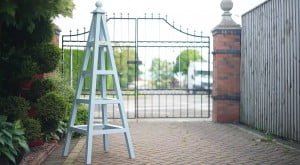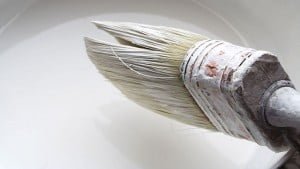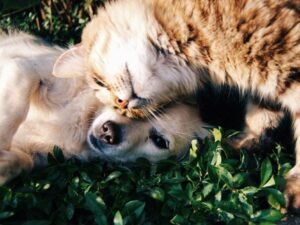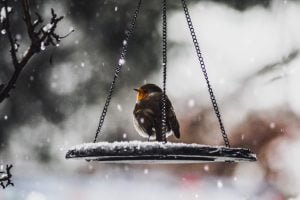Have you ever woken up to lush green gardens and the beautiful sound of birds chirping? What if you could bring that feeling to your home garden every day? Why are there no birds in my garden? Come on then, let’s explore how to attract wild birds to your garden! Let’s fly right in!
How to attract wild birds to your garden FAQs
Birds are naturally curious and they’re also very territorial. So, if you want to attract wild birds to your garden, it’s best to start by putting out a few bird feeders.
The best time to put up a new bird feeder is in spring or early summer. This is when most birds are starting their breeding cycle, so they’ll be looking for food to help them raise their chicks.
You can buy ready-made bird feeders from garden centres, DIY stores and online retailers like Robinson Garden! You can also make your own by following our guide on how to make a DIY bird feeder.
Once you’ve got your new feeder up and running, it’ll take about two weeks for the birds to find it – give them time!
If you want to attract wild birds to your garden, then you will need to provide them with the food, water and shelter they need. You can do this by choosing the right plants and trees, providing a bird bath, and installing a bird table or bird feeder in your garden.
The following are good places to put bird food:
- In trees – Trees that have lots of branches are great because they give birds somewhere to perch while eating, so try planting some fruit trees like apple and cherry trees.
- On ground level – Birds like eating seeds from the ground, so if you have some patches of grass in your garden then you could sprinkle some seeds on them.
- In hanging baskets – Hanging baskets are a great way for birds to find food on balconies or patios where there are no trees or bushes for them to land on.
The best way to attract wild birds to your garden is by providing them with a food source and a place to nest.
The UK has over 200 species of wild bird, with many more in the rest of Europe and beyond. Birds are an essential part of the ecosystem, and their presence can add a sense of magic and wonder to any garden.
What to put out in the garden?
Wild bird feeders: These can be hung from trees or fences, or placed on stands in the garden. They should be easy for birds to access, but not so easy that they fall off easily! A good idea is to put them on a wire holder rather than directly on trees or other surfaces, as this makes it easier for larger birds like crows and magpies to access them too (and you don’t want those!).
It’s best not to use plastic feeders as these can easily become tangled up in trees or bushes if they’re left outside all winter long – metal ones last longer and don’t rust either!
You want to attract birds, but you don’t know where to start? That’s okay. I’ll show you how to do it!
The first thing you need is a bird feeder. This is the most important part of your bird attracting device. Without them, they won’t come and check out your yard at all!
The next thing you need are bird houses. These are also very important because they allow the birds to nest and raise their young in safety.
You may be wondering what kind of feeder or house works best for attracting certain types of birds? The answer is that there really isn’t one! All kinds of different bird feeders and houses will attract different types of birds.
So, pick up some different types (like ones that can hold seeds and nuts) and see what attracts what type of bird best!
Provide For Their Primary Needs
Wondering how to attract different birds to your garden? Everything you need to know is here! Just like humans have their primary needs of food, clothing and shelter, birds also have a few primary needs.
It is a natural behaviour that a place or surrounding which meets their Primary needs attracts them and they are more likely to keep visiting the same place again and again.
So the simplest idea to attract wild birds to your garden is by putting all their primary needs together in one place. Let’s see what these are!
1. Food
The best way to attract birds to your garden is by giving out the right kind of bird feed. If you have good amount of knowledge about the native bird species around your area along with the migratory birds and their seasons, it helps you to decide the right food during the right time.
If you know exactly the species of birds you want to see, you can pick out specific foods which are the species’ favourites. For example, songbirds like Blue Jays, chickadees and grosbeaks are easily attracted to black oil sunflower seeds while birds like nuthatches and finches are more enticed by relatively smaller seeds like nyjer or millet.
Make sure that you change these foods from time to time and include nutritional bird feeds. Along with that, you can also include household scraps that act as good bird feed which includes bread crumbs, cooked potatoes, cheese, etc. Household items help in attracting native birds to your garden.
Now, to effectively make use of this food you should get bird feeders or bird tables to place in your garden. Using the perfect bird tables, you get the freedom of including a variety of foods in the same stand. This assists in attracting different types of birds.
Along with different species of birds, their feeding preferences change. From the eating habits to the size, shape and height of stands, everything changes. So you can start by adding on multiple bird feeders and strategically placing them at different heights to attract birds to your garden as much as possible.
2. Water
The next basic need for birds is water. Here’s how to attract different birds to your garden using water sources. Ensure you provide ample amounts of water for the birds showing up in your garden. One can also install birdbaths as they are an instant draw for the birds.
It has been scientifically observed that birds are actually be drawn to moving or flowing water. Sometimes birds don’t even understand the difference between water and land unless the water is moving. So including a dripper or a circulating pump in your bird baths can enhance your chances to attract birds from long distances too.
A prominent, secured and fixed supply of water will attract birds to your garden. If you don’t have a big space to create an artificial pond, you should install multiple bird baths so that it doesn’t get too crowded in one.
3. Shelter
Here’s another easy-to-provide bird need: shelter. Alike to humans, birds require a safe space to nest or rest is the most likely to attract any kind of bird. Adding bird boxes and artificial nesting places will encourage birds to visit your gardens and nest there from time to time. You should choose the right bird boxes as per the size and preference of the birds you want to attract.
Not all birds will be pleased with an artificial nesting place. If you still want to encourage nesting in your gardens, then you can include other materials that are used by birds when naturally constructing a nest. So, this includes elements like sticks, dry hay, pet fur, hair, strings, etc. You can put all these on a bird table and let the birds make use of your available garden space!
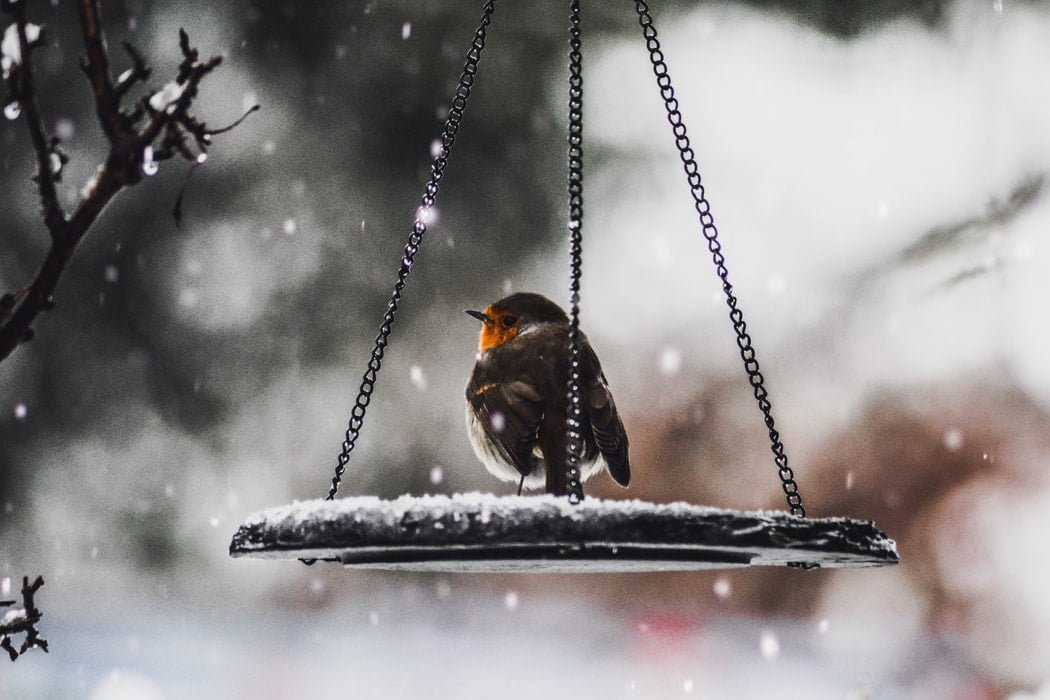
Attract With Colours
Birds often get attracted to loud and bright colours in the garden. Hence, to attract more wild birds to your garden, you can include as many bright colours as possible in your garden.
Let’s see how to attract different birds to your garden with different colours! So one can easily start by planting naturally colourful shrubs and vibrant flowering plants or including small elements of colour in your garden decor. One can also invest in vibrantly painted bird feeding stations or bird tables which will be more attractive to birds.
You should also note that birds are often attracted to their colours. So if you know which birds you want in your garden, you can pay more attention on incorporating more of similar colours in your garden. For example, include more blue in the garden to attract birds like kingfishers and other bluebirds.
Seasonal Changes
Even though the basic needs of birds are the same, their nature changes with different seasons. For example, the need for shelter will not be as strong in summer as it will be in winter whereas the need for bird baths and water sources increases during summer.
A good host garden should be changed as per the needs of birds in different seasons. This is also where your knowledge of local and migratory birds will come in handy. You can arrange for food, water and shelter according to the preferences of the Seasonal birds to attract them to your garden.
Some birds are also attracted to particular plants. Planting the plants that the birds in your area are familiar with is another way of attracting native birds to your garden. Birds are used to having local plants as their food sources as well. So seed-producing or berry-producing shrubs are more than welcome in your garden. However, if this is the sole source of food in your garden then make sure you plant some fruit-bearing plants such as apples so that the birds receive proper nutrition as well.
Adding in more nests or bird boxes during spring and winter is favourable as the birds are desperate for a warm resting spot. One can also adorn these nesting places with wool, cotton or old rags and clothes to provide warmth for the birds. To attract birds that prefer natural nesting during winters, you can add thorny bushes such as hawthorn and raspberries to your garden.

Proper Maintenance
Setting up bird feeders and then never looking back is not going to help! You have to keep paying attention to your garden from time to time. To attract wild birds to your garden, make sure that your feeders and water sources are clean both from the inside and from the outside.
You can understand that it’s time to clean the bird feeders when you notice fewer birds coming in to feed than regular. Once the seeds become mouldy or wet, birds will avoid feeding on that feeder. This is also a reason why you shouldn’t fill the bird feeders more than necessary. Putting in a little amount of bird feed every day as required is preferred.
Cleaning up the area under the bird feeders will also prevent the ground feeders from eating something they are not supposed to. It will also keep the birds healthy and away from the risk of diseases.
Similarly, keeping your garden clean and attractive is also very important to attract birds. Planting and replanting vibrant bushes while keeping the old ones well-trimmed is a difficult but requisite task.
Things to Remember!
Even if you have done everything right, it’s imperative to remember a few things while setting up your garden for birds. The most common thing is keeping in mind the location of your feeders. Situate the feeders in a way that can keep an eye on squirrels who are often known to be bird food hoggers.
An important thing to practice while attempting to attract birds is to stop the use of any inorganic substances like fertilisers and chemicals for your gardens as these are dangerous for the birds.
Birds also require a high amount of glucose to sustain themselves, especially so during summers. Hence, to provide add-on nutrition to birds, you can include a pinch of salt and sugar in the water sources and bird baths.
Birds you are likely to find in your garden
For many people, the garden is the first point of contact with wildlife. For experienced bird watchers, it’s an ideal location to improve on your identification skills and study bird behaviour.
The most common birds that you are likely to find in your garden are:-
Greenfinch – They favour gardens and parks with tall yew trees, cotoneaster berries, peanut and old hedges. Males are easy to identify by their green plumage and flashes of yellow. Also known as Carduelis Chloris.
Great spotted woodpecker – the most common woodpecker to spot in your garden. They are often spotted on feeders with nuts and fat. The male has a red patch on its head. The red on the female is less visible. Also known as Dendrocopos major.
Great tit – A common garden bird that is dominant at most garden feeders. Known for their note song familiar in the spring. Also known as Parus major.
Kestrel – The least common to find in a garden, often spotted in towns catching mice. Famous for hovering in mid-air to catch their prey.
Robin – this shy round-bodied bird is often found during the winter months. Also known as Erithacus rubecula.
Chaffinch – The Chaffinch is one of the first birds to sing in the spring and is a regular visitor to any bird table. Also known as Fringilla Coelebs.
Blackbird – Known for its melodious song. Often found in wooded parks and gardens. Also known as Turdus Merula.
Blue tit – A common and very popular garden bird. Frequently found on feeders and generally use nest boxes more than any other species. Also known as Parus Caeruleus.
Song thrush – its repetitive song is one of the features of the spring months. Popular for eating snails, smashing shells against kerbstones and paving slabs. Also known as Turdus Philomelos.
Wren – A tiny and plump bird with a surprisingly loud voice. The wren has a distinctive flight pattern often plunging into dense cover. Also known as Troglodytes.

Final Words
It’s a difficult thing to attract wild birds to your garden but not an impossible one! Just a few things here and there, a little attention to your garden and a little time out for your winged friends is all you need.
However, keep in mind that Rome wasn’t built in a day. Just because you have done it all right doesn’t mean that you will see flocks of birds gathering in your gardens the next day. The birds might take some time to get used to your place, settle in and for the ‘chirp’ to spread, but if you keep at it, you will have the garden of your dreams in no time!
Have you ever woken up to lush green gardens and the beautiful sound of birds chirping? What if you could bring that feeling to your home garden every day? Why are there no birds in my garden? Come on then, let’s explore how to attract wild birds to your garden! Let’s fly right in!
How to attract wild birds to your garden FAQs
Birds are naturally curious and they’re also very territorial. So, if you want to attract wild birds to your garden, it’s best to start by putting out a few bird feeders.
The best time to put up a new bird feeder is in spring or early summer. This is when most birds are starting their breeding cycle, so they’ll be looking for food to help them raise their chicks.
You can buy ready-made bird feeders from garden centres, DIY stores and online retailers like Robinson Garden! You can also make your own by following our guide on how to make a DIY bird feeder.
Once you’ve got your new feeder up and running, it’ll take about two weeks for the birds to find it – give them time!
If you want to attract wild birds to your garden, then you will need to provide them with the food, water and shelter they need. You can do this by choosing the right plants and trees, providing a bird bath, and installing a bird table or bird feeder in your garden.
The following are good places to put bird food:
- In trees – Trees that have lots of branches are great because they give birds somewhere to perch while eating, so try planting some fruit trees like apple and cherry trees.
- On ground level – Birds like eating seeds from the ground, so if you have some patches of grass in your garden then you could sprinkle some seeds on them.
- In hanging baskets – Hanging baskets are a great way for birds to find food on balconies or patios where there are no trees or bushes for them to land on.
The best way to attract wild birds to your garden is by providing them with a food source and a place to nest.
The UK has over 200 species of wild bird, with many more in the rest of Europe and beyond. Birds are an essential part of the ecosystem, and their presence can add a sense of magic and wonder to any garden.
What to put out in the garden?
Wild bird feeders: These can be hung from trees or fences, or placed on stands in the garden. They should be easy for birds to access, but not so easy that they fall off easily! A good idea is to put them on a wire holder rather than directly on trees or other surfaces, as this makes it easier for larger birds like crows and magpies to access them too (and you don’t want those!).
It’s best not to use plastic feeders as these can easily become tangled up in trees or bushes if they’re left outside all winter long – metal ones last longer and don’t rust either!
You want to attract birds, but you don’t know where to start? That’s okay. I’ll show you how to do it!
The first thing you need is a bird feeder. This is the most important part of your bird attracting device. Without them, they won’t come and check out your yard at all!
The next thing you need are bird houses. These are also very important because they allow the birds to nest and raise their young in safety.
You may be wondering what kind of feeder or house works best for attracting certain types of birds? The answer is that there really isn’t one! All kinds of different bird feeders and houses will attract different types of birds.
So, pick up some different types (like ones that can hold seeds and nuts) and see what attracts what type of bird best!
Provide For Their Primary Needs
Wondering how to attract different birds to your garden? Everything you need to know is here! Just like humans have their primary needs of food, clothing and shelter, birds also have a few primary needs.
It is a natural behaviour that a place or surrounding which meets their Primary needs attracts them and they are more likely to keep visiting the same place again and again.
So the simplest idea to attract wild birds to your garden is by putting all their primary needs together in one place. Let’s see what these are!
1. Food
The best way to attract birds to your garden is by giving out the right kind of bird feed. If you have good amount of knowledge about the native bird species around your area along with the migratory birds and their seasons, it helps you to decide the right food during the right time.
If you know exactly the species of birds you want to see, you can pick out specific foods which are the species’ favourites. For example, songbirds like Blue Jays, chickadees and grosbeaks are easily attracted to black oil sunflower seeds while birds like nuthatches and finches are more enticed by relatively smaller seeds like nyjer or millet.
Make sure that you change these foods from time to time and include nutritional bird feeds. Along with that, you can also include household scraps that act as good bird feed which includes bread crumbs, cooked potatoes, cheese, etc. Household items help in attracting native birds to your garden.
Now, to effectively make use of this food you should get bird feeders or bird tables to place in your garden. Using the perfect bird tables, you get the freedom of including a variety of foods in the same stand. This assists in attracting different types of birds.
Along with different species of birds, their feeding preferences change. From the eating habits to the size, shape and height of stands, everything changes. So you can start by adding on multiple bird feeders and strategically placing them at different heights to attract birds to your garden as much as possible.
2. Water
The next basic need for birds is water. Here’s how to attract different birds to your garden using water sources. Ensure you provide ample amounts of water for the birds showing up in your garden. One can also install birdbaths as they are an instant draw for the birds.
It has been scientifically observed that birds are actually be drawn to moving or flowing water. Sometimes birds don’t even understand the difference between water and land unless the water is moving. So including a dripper or a circulating pump in your bird baths can enhance your chances to attract birds from long distances too.
A prominent, secured and fixed supply of water will attract birds to your garden. If you don’t have a big space to create an artificial pond, you should install multiple bird baths so that it doesn’t get too crowded in one.
3. Shelter
Here’s another easy-to-provide bird need: shelter. Alike to humans, birds require a safe space to nest or rest is the most likely to attract any kind of bird. Adding bird boxes and artificial nesting places will encourage birds to visit your gardens and nest there from time to time. You should choose the right bird boxes as per the size and preference of the birds you want to attract.
Not all birds will be pleased with an artificial nesting place. If you still want to encourage nesting in your gardens, then you can include other materials that are used by birds when naturally constructing a nest. So, this includes elements like sticks, dry hay, pet fur, hair, strings, etc. You can put all these on a bird table and let the birds make use of your available garden space!

Attract With Colours
Birds often get attracted to loud and bright colours in the garden. Hence, to attract more wild birds to your garden, you can include as many bright colours as possible in your garden.
Let’s see how to attract different birds to your garden with different colours! So one can easily start by planting naturally colourful shrubs and vibrant flowering plants or including small elements of colour in your garden decor. One can also invest in vibrantly painted bird feeding stations or bird tables which will be more attractive to birds.
You should also note that birds are often attracted to their colours. So if you know which birds you want in your garden, you can pay more attention on incorporating more of similar colours in your garden. For example, include more blue in the garden to attract birds like kingfishers and other bluebirds.
Seasonal Changes
Even though the basic needs of birds are the same, their nature changes with different seasons. For example, the need for shelter will not be as strong in summer as it will be in winter whereas the need for bird baths and water sources increases during summer.
A good host garden should be changed as per the needs of birds in different seasons. This is also where your knowledge of local and migratory birds will come in handy. You can arrange for food, water and shelter according to the preferences of the Seasonal birds to attract them to your garden.
Some birds are also attracted to particular plants. Planting the plants that the birds in your area are familiar with is another way of attracting native birds to your garden. Birds are used to having local plants as their food sources as well. So seed-producing or berry-producing shrubs are more than welcome in your garden. However, if this is the sole source of food in your garden then make sure you plant some fruit-bearing plants such as apples so that the birds receive proper nutrition as well.
Adding in more nests or bird boxes during spring and winter is favourable as the birds are desperate for a warm resting spot. One can also adorn these nesting places with wool, cotton or old rags and clothes to provide warmth for the birds. To attract birds that prefer natural nesting during winters, you can add thorny bushes such as hawthorn and raspberries to your garden.

Proper Maintenance
Setting up bird feeders and then never looking back is not going to help! You have to keep paying attention to your garden from time to time. To attract wild birds to your garden, make sure that your feeders and water sources are clean both from the inside and from the outside.
You can understand that it’s time to clean the bird feeders when you notice fewer birds coming in to feed than regular. Once the seeds become mouldy or wet, birds will avoid feeding on that feeder. This is also a reason why you shouldn’t fill the bird feeders more than necessary. Putting in a little amount of bird feed every day as required is preferred.
Cleaning up the area under the bird feeders will also prevent the ground feeders from eating something they are not supposed to. It will also keep the birds healthy and away from the risk of diseases.
Similarly, keeping your garden clean and attractive is also very important to attract birds. Planting and replanting vibrant bushes while keeping the old ones well-trimmed is a difficult but requisite task.
Things to Remember!
Even if you have done everything right, it’s imperative to remember a few things while setting up your garden for birds. The most common thing is keeping in mind the location of your feeders. Situate the feeders in a way that can keep an eye on squirrels who are often known to be bird food hoggers.
An important thing to practice while attempting to attract birds is to stop the use of any inorganic substances like fertilisers and chemicals for your gardens as these are dangerous for the birds.
Birds also require a high amount of glucose to sustain themselves, especially so during summers. Hence, to provide add-on nutrition to birds, you can include a pinch of salt and sugar in the water sources and bird baths.
Birds you are likely to find in your garden
For many people, the garden is the first point of contact with wildlife. For experienced bird watchers, it’s an ideal location to improve on your identification skills and study bird behaviour.
The most common birds that you are likely to find in your garden are:-
Greenfinch – They favour gardens and parks with tall yew trees, cotoneaster berries, peanut and old hedges. Males are easy to identify by their green plumage and flashes of yellow. Also known as Carduelis Chloris.
Great spotted woodpecker – the most common woodpecker to spot in your garden. They are often spotted on feeders with nuts and fat. The male has a red patch on its head. The red on the female is less visible. Also known as Dendrocopos major.
Great tit – A common garden bird that is dominant at most garden feeders. Known for their note song familiar in the spring. Also known as Parus major.
Kestrel – The least common to find in a garden, often spotted in towns catching mice. Famous for hovering in mid-air to catch their prey.
Robin – this shy round-bodied bird is often found during the winter months. Also known as Erithacus rubecula.
Chaffinch – The Chaffinch is one of the first birds to sing in the spring and is a regular visitor to any bird table. Also known as Fringilla Coelebs.
Blackbird – Known for its melodious song. Often found in wooded parks and gardens. Also known as Turdus Merula.
Blue tit – A common and very popular garden bird. Frequently found on feeders and generally use nest boxes more than any other species. Also known as Parus Caeruleus.
Song thrush – its repetitive song is one of the features of the spring months. Popular for eating snails, smashing shells against kerbstones and paving slabs. Also known as Turdus Philomelos.
Wren – A tiny and plump bird with a surprisingly loud voice. The wren has a distinctive flight pattern often plunging into dense cover. Also known as Troglodytes.

Final Words
It’s a difficult thing to attract wild birds to your garden but not an impossible one! Just a few things here and there, a little attention to your garden and a little time out for your winged friends is all you need.
However, keep in mind that Rome wasn’t built in a day. Just because you have done it all right doesn’t mean that you will see flocks of birds gathering in your gardens the next day. The birds might take some time to get used to your place, settle in and for the ‘chirp’ to spread, but if you keep at it, you will have the garden of your dreams in no time!



